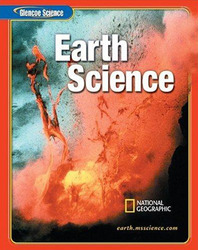VOLCANOES AND THE RING OF FIRE Introduction In this WebQuest, students complete Internet research on the ring of fire and its associated volcanoes. Students learn more about plate tectonics and about the different types
of plate boundaries. They learn why more active volcanoes are located along the edges of the Pacific Plate. They find out which volcanoes are active, and where these volcanoes are
located. They prepare a table and compile information for at least five active volcanoes. Finally, they draw simple maps and locate each of the volcanoes listed in their tables on
their maps. Top
Task Students will complete a table that lists volcanoes in the ring of fire that have had recent volcanic activity. They will have to sort through the information in several of the web
sites to find volcanoes located in southeast and east Asia, along the coasts of Alaska, Washington, Oregon, and California, and along the western coasts of Mexico, Central America,
and South America. Each web site has some of the information they will need to complete the table. Students should be able to sift through the information available to identify pertinent
details for their tables. From their Internet research, students should be able to list at least five active volcanoes, and be able to locate them on their simple map. Objectives - Research plate tectonics, plate boundaries, and the ring of fire.
- Identify active volcanoes that are located along the ring of fire.
- Describe recent volcanic activity of at least five active volcanoes found along the ring of fire.
Top
Resources Students will use the Internet links given to find out all about plate tectonics, plate boundaries, and active volcanoes along the ring of fire. They will learn about the recent volcanic
activity of at least five of these volcanoes, and describe some important facts about each volcano. They will draw maps of the ring of fire area based on maps found at various Internet
links. Finally, they will complete tables about active volcanoes in the ring of fire and locate each volcano on the maps they have drawn. Top
Time 1 class period for research and completion of the table and map Top
Process As students progress through the list of web sites, you may help them to focus on what they need to know to fill in the table. Several of the web sites have links to other web sites
with relevant information. If time allows, you may want to allow students to explore this subject further. However, three of the sites listed are the best sites on this subject available
on the Internet; further research may not yield additional data. Top
Evaluation Evaluation of student work will depend upon the extent of the material listed in their tables. Students must have at least five active volcanoes listed in their tables and identified
on their maps. However, students may have more than five listings; additional listings may add points to their total score as long as other criteria have been met. Make sure that the
volcanoes listed can be found along the ring of fire where the Pacific Plate converges with other tectonic plates. Once students have completed the table, you may wish to use the rubric
below for scoring their work. The rubric is based on five volcanoes in the table. Table and Map
Rubric | Possible
Points* | Self-
Assessment | Teacher
Assessment | | At least five volcanoes were included | 10 | | | Table had at least four columns of information | 10 | | | Date of last volcanic activity given for each volcano | 10 | | | One important fact given for each volcano listed | 10 | | | | Location of volcanoes on map correct | 10 | | | | Total Possible Points | 50 | | |
*Rate each category according to the following scale: Excellent – 9-10 points; Very Good – 7-8 points; Good – 5-6 points; Satisfactory – 3-4 points; Poor – 1-2
points; and Unsatisfactory – 0 points.
Top Conclusion Students should be able to fill in the table and locate the volcanoes listed on the map. Students should be able to answer questions about plate boundaries as they relate to the ring
of fire. Students should be able to identify the web sites they used to fill in their tables and locate volcanoes on their maps. Top
| 




